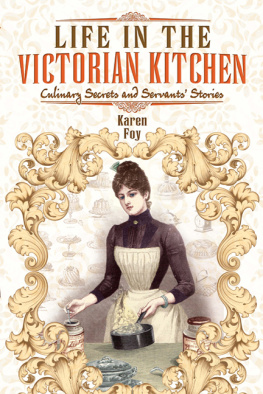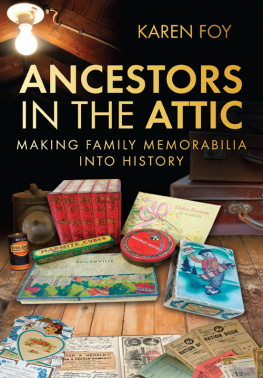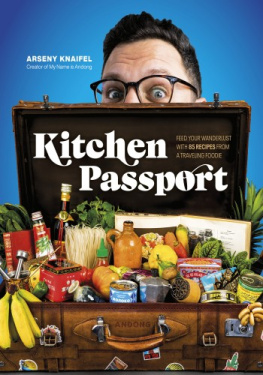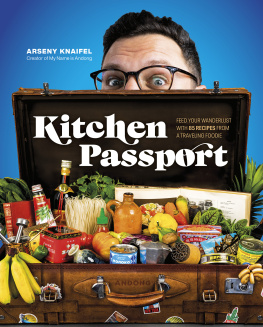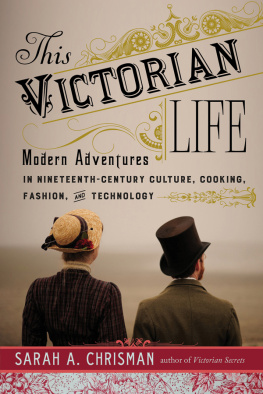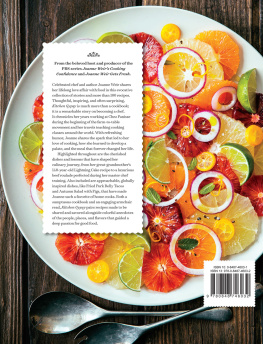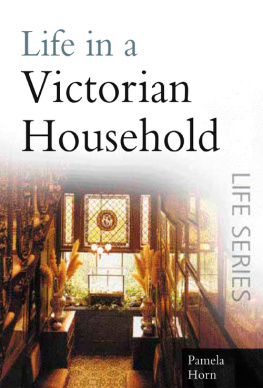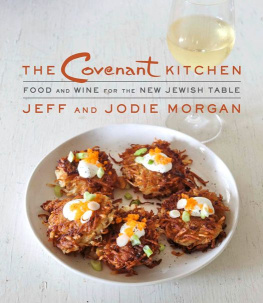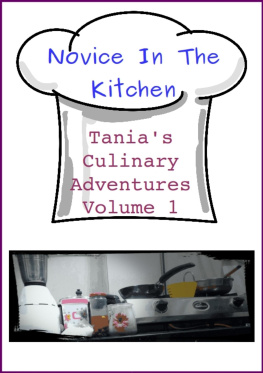
First published in Great Britain in 2014 by
Pen & Sword History
an imprint of
Pen & Sword Books Ltd
47 Church Street
Barnsley
South Yorkshire
S70 2AS
Copyright Karen Foy 2014
ISBN 978 1 78303 639 4
eISBN 978 1 47384 116 1
The right of Karen Foy to be identified as the Author of this Work has been asserted by her in accordance with the Copyright, Designs and Patents Act 1988.
A CIP catalogue record for this book is available from the British Library
All rights reserved. No part of this book may be reproduced or transmitted in any form or by any means, electronic or mechanical including photocopying, recording or by any information storage and retrieval system, without permission from the Publisher in writing.
Typeset in Ehrhardt by
Mac Style, Bridlington, East Yorkshire
Printed and bound in the UK by CPI Group (UK) Ltd,
Croydon, CRO 4YY
Pen & Sword Books Ltd incorporates the imprints of Pen & Sword Archaeology, Atlas, Aviation, Battleground, Discovery, Family History, History, Maritime, Military, Naval, Politics, Railways, Select, Transport, True Crime, and Fiction, Frontline Books, Leo Cooper, Praetorian Press, Seaforth Publishing and Wharncliffe.
For a complete list of Pen & Sword titles please contact
PEN & SWORD BOOKS LIMITED
47 Church Street, Barnsley, South Yorkshire, S70 2AS, England
E-mail: enquiries@pen-and-sword.co.uk
Website: www.pen-and-sword.co.uk
Contents
Introduction
H ave you ever read an old recipe, or an inherited family cookbook and wondered how your ancestors managed long before the introduction of the microwave and freezer? Just how should you coddle an egg, how would you source a pineapple in the 1800s and what on earth was mock turtle soup? Today, we rarely take seasonal cooking into consideration, but long before the development of the modern supermarket, the availability of produce and ingredients dominated peoples lives.
Picture the scene: its a hot summers day and fields of corn sway gracefully in the gentle mid-afternoon breeze, as jewel coloured kingfishers watch the world go by from the riverbank. Outside a tumbledown cottage children play, skipping alongside the vegetable patch, chasing each other between the lines of freshly laundered washing, whilst the aroma of hot fresh-baked bread wafts through the open kitchen window. Add appropriate costumes and a dash of makeup and you could have walked onto the set of a television period drama.
Even before TV gave us historical adaptations, our forebears often romanticised life in the past through paintings, which presented a highly idealised view of the world. These images of rural life, where the mother of a brood of children casually bakes bread on the kitchen table, seem carefree and easy a moment in time captured on canvas. I often wish we could revisit the same scene half an hour later to see the reality: the mother up to her armpits in washing, with the stone floor to be scrubbed, the fire to be stoked, and the ongoing dilemma of feeding eight with only one loaf of bread.
Although these artists secured rose-tinted snapshots of an era before the camera, the reality was often harsh and unforgiving. Summers in the Victorian countryside, uninterrupted by industry and bursting with the sights and sounds of nature must have been glorious, but what about the bleak winters, when fields of frostbitten crops brought little work for the menfolk, leaving their families hungry?
Period novels help to give us further perspective, enabling us to revel in the luxurious lives of the wealthy whilst feeling grateful that we are not exposed to the dire situations experienced by the poor. Jane Austen largely avoids the subject of poverty in her novels and when she refers to the servants they rarely speak for themselves or reveal their thoughts and feelings, only confirming the belief that at this time domestics were seen and not heard. Jane showcased polite society in her upper middle class tales of Regency life but, as the Victorian era dawned, writers began to give a truer picture of the wildly differing living conditions experienced among the social classes.
Dickens offers a glimpse of the underbelly of nineteenth century society and criticises the blind eye turned to it by the wealthy. Flora Thompson wrote of her late Victorian Oxfordshire childhood in what now seems like a rural idyll, yet behind the everyday occurrences she skilfully exposes the hardships faced by the hamlet dwellers compared to their contemporaries in the nearby town.
During this period, the lives of the rich and the poor could not have been more different. Their homes, amenities, employment choices and incomes were poles apart. In the nineteenth century, your social status determined everything from the way you wore your clothes to the food you ate. Etiquette was essential among the educated upper classes, but the working classes didnt have the time to linger over a leisurely breakfast. Employment was hard to come by and easily lost, so getting to work on time was their priority. They didnt possess multiple sets of cutlery, taking up a fresh one for each course, instead a single knife, fork and spoon for each family member.
For most ordinary working people, meals consisted of one simple course to deliberate over, and they could only dream of the lavish, exotically flavoured dishes enjoyed by the upper classes. Few had access to expensive ingredients, or the wherewithal to pay for them. Country people would sow basic crops in their small kitchen gardens or on a rough patch of land near their cottage and hope to grow enough produce to last the winter. Life was a constant battle of finding work, putting food on the table, clothing their families and maintaining their homes and, on the rare occasion when they had a spare half an hour, they had very little resources to do anything with it.
But every social class shared one common denominator. No matter what era we live in, our lives revolve around food what we eat, when we eat, the quantity of our food, or the lack of it. As a result, the kitchen has long been the heart of every home, whether a basic cooking pot in a rural cottage or the bustling hub of a country mansion.
To fully understand the development of the Victorian kitchen, we must first look back at the economic history of Britain and the inherited legacy left by previous generations. From the battle to reduce the global price of wheat to the introduction of new labour-saving methods and innovations, each event, incident and invention revolutionised life within the home. The Victorians witnessed more rapid changes in mechanisation than in any previous era. Cooking over an open grate was commonplace at the start of Queen Victorias reign, but when her era drew to a close, gas and electric devices, ground-breaking technology, and an endless variety of ingredients from the Empire had opened up a new and exciting culinary world to the British public.
Chapter One
The Rural Revolution: Feast and Famine
Oats: A grain, which in England is generally given to horses, but in Scotland supports the people.
(Samuel Johnson, A Dictionary of the English Language , 1755)
W hen Queen Victoria came to the throne in 1837, Britain was in the midst of one of the many transitional periods that were to take place during her reign. Working the land remained one of the most common ways for Britons to earn a living, yet with compulsory education still far off on the horizon, a quarter of the population was living in poverty, with 40 per cent of the countrys wealth owned by 5 per cent of the population. Britain was still feeling the effects of a war that had ended 20 years previously. The Napoleonic Wars had made it impossible to import corn from Europe, resulting in the expansion of British wheat farming and, for the landowner and farmer, an era of advancing progress and affluence.
Next page
